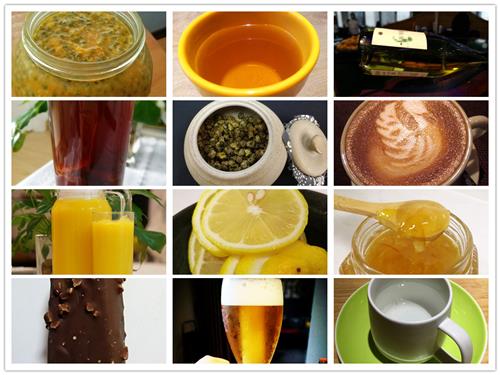Mint, also known as spearmint, is a perennial herb. Stems and leaves are used for medicine, which has the functions of dispelling wind, cooling, detoxification, and rash.
How to eat mint leaves
Mint tea
Ingredients: Dried mint 4 money, rock sugar, green tea a little.
Method: Add 2,000 ml of water to the pot, boil it in, add mint leaves and green tea, extinguish the foam to cool water, filter out leaf residue and add sugar to drink. Dried mint leaves are available in pharmacies if you have fresh mint leaves. The brewing ratio is 1 mint leaf with 500 ml of water.
Efficacy: The cool and refreshing mint can eliminate the irritability of the summer heat and the gastrointestinal tract, and if there is a hot summer cold, this is a very good drink.

Mint green bean soup
Ingredients: Mint 5g, Coix seed 30g, Mung bean 60g, Sugar 1-2 spoons.
Practice: Wash the beans with barley, blanch for 3 hours. Pour 800 ml of water into the pot, and add the leek and green beans to medium heat and boil. Change to low heat and boil for half an hour. Add mint and sugar and continue cooking for 5-10 minutes. Place into a bowl.
Efficacy: Qingrejiedu, especially suitable for people with long acne drink.
Mint bean curd
Ingredients: 2 tofu, 50 g fresh mint leaves, 3 onions
Practice: Add 2 bowls of decoction and cook until the water is cut in half.
Efficacy: It can treat diseases such as cold, stuffy nose, sneezing, runny nose, etc.
The pharmacological effects of mint leaves
1, peppermint water topical application of cool, itching, anti-inflammatory, analgesic effect.
2, antipyretic: a small amount of mint can stimulate the central nervous system, so that the expansion of the surrounding capillaries and heat; and promote the sweat gland secretion and sweating. Therefore, it has the effect of lowering body temperature.
3. Anti-inflammatory: The 8 kinds of catechol naphthoic acid contained in mint is an effective anti-inflammatory agent that can inhibit 3a-hydroxysteroid dehydrogenase and has a weak self-anti-inflammatory effect. Blue balm oil contained in mint has anti-inflammatory effects on scald rabbit ears.
4, peppermint can increase the secretion of respiratory mucus. In addition to the mucus attached to the mucous membranes, the foam can be reduced and the effective ventilation of the respiratory tract can be increased.
5, peppermint oil has a stomachic effect, a therapeutic effect on experimental gastric ulcer; there is a strong choleretic effect, as well as liver protection.
Food additives are compounds or natural substances added to food for the purpose of improving the color, aroma, and taste of food, as well as for the needs of anti-corrosion and processing technology. At present, there are 23 categories of food additives, with more than 2,000 varieties, including acidity regulators, anticaking agents, defoamers, antioxidants, bleaching agents, leavening agents, coloring agents, color retention agents, enzyme preparations, and flavor enhancers, nutritional fortifiers, preservatives, Sweeteners, thickeners, spices, etc.
Erythritol, Sweetener, Pigment, XOS , Carotene, fish oil
Xi'an Gawen Biotechnology Co., Ltd , https://www.ahualyn-bios.com